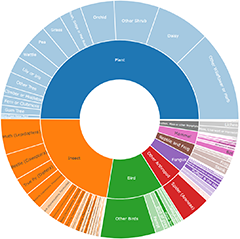Maps
Colonial nesters (Herons, Cormorants, etc)
Dickson Wetland Corridor species
Overview
The Dickson Wetland Corridor may have potential for improving ecological connectivity for aquatic-riparian ecosystems. This area also plays an important role in storm water conveyance and maintaining water quality in the inner north.
Moderators
Become the first moderator for Dickson Wetland Corridor
7 species
- Area (hectares) 40.87 ha
- Survey Effort Score (SES) 33.2 sightings per ha
Follow Dickson Wetland Corridor
Receive alerts of new sightings
SubscribeConservation level
-
Local native (change?)
* designates formal legal status
Invasiveness
- All invasiveness levels (change?)
Share location
Share link to Dickson Wetland Corridor field guide

























